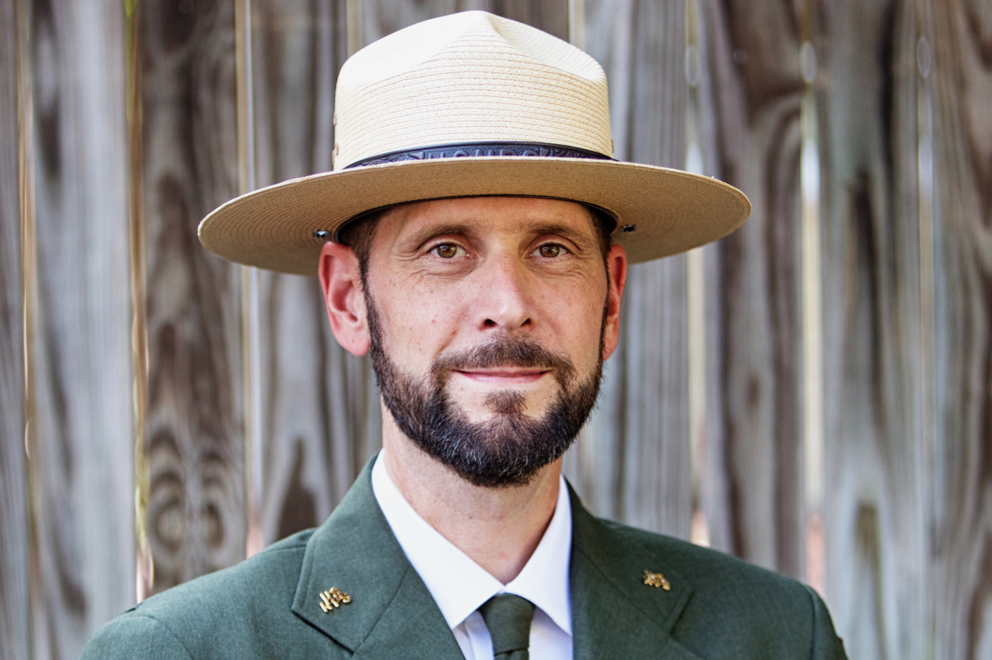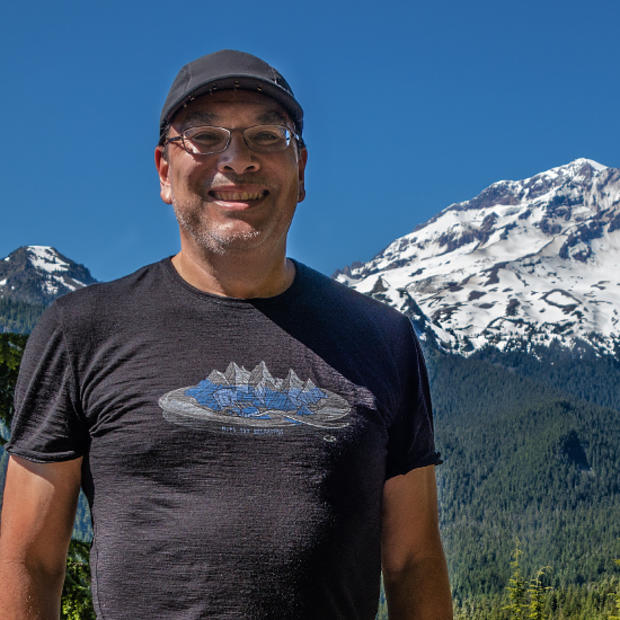This story originally appeared in High Country News.
White, male and “midcareer,” Seattle’s Charles Beall in a lot of ways is the face of the National Park Service that turns 100 on Aug. 25. He also may be the best hope the agency has for changing that face to match the diversity that is rapidly transforming this country. And the reasons essentially start out the same: Because he is white, male and “midcareer.”
Beall, 43, fits the bill for change partially because he must. The workforce at his agency is 83 percent white, and the federal hiring system is so Byzantine and tilted toward veterans, a dramatic change in racial composition will not come soon. Nonwhites made up 37 percent of the nation’s population, but were only 22 percent of national park visitors, according to the agency’s 2011 survey. Such disparity cemented a common belief that the system lacks relevance to communities of color. In fact, the No. 1 reason nonwhites give in surveys for not visiting national parks is that they don’t know much or anything about them.
So the initial push for diversity in the national parks will not likely come from people of color or other outsiders; it must come from the agency’s own overwhelming whiteness. And it will be for self-preservation reasons. The U.S. will be a majority nonwhite within three decades and if that new majority does not have a relationship with the park service or the outdoors, its will to support either could be nonexistent.
 A change agent, Beall is superintendent of Seattle’s National Park units, which include Klondike Gold Rush in Pioneer Square, the national-park-affiliated Wing Luke Museum of the Asian Pacific American Experience up the street in the Chinatown-International District, and the Bainbridge Island Japanese American Exclusion Memorial, which reflects as a cautionary tale the imprisonment of people of Japanese descent during World War II. Draw a line through those three and east to Lake Washington, and south of that line lays the state’s most diverse communities — and opportunity for Beall’s national park units to engage more people of color.
A change agent, Beall is superintendent of Seattle’s National Park units, which include Klondike Gold Rush in Pioneer Square, the national-park-affiliated Wing Luke Museum of the Asian Pacific American Experience up the street in the Chinatown-International District, and the Bainbridge Island Japanese American Exclusion Memorial, which reflects as a cautionary tale the imprisonment of people of Japanese descent during World War II. Draw a line through those three and east to Lake Washington, and south of that line lays the state’s most diverse communities — and opportunity for Beall’s national park units to engage more people of color.
Beall’s little piece of the big park service may have only the assets, personnel and budget of a small business, but he also has small-business nimbleness and gumption. Those can help him outmaneuver the inertia that can grip bigger units such as Mount Rainier National Park or North Cascades, where he once worked. Among the 59 large national-park units along with Olympic, they can get too bogged down in day-to-day worries about infrastructure, visitor management, and even climate change impacts, to have the focus and time for big-picture missions such as diversity and inclusiveness.
“I feel I’ve got more empowerment to move the agenda as I think I understand it,” Beall says. “It’s pretty clear that (the national parks) are about preparing for the next century of service, and I feel like I can help move us in that direction, sitting here in Seattle.”
By the time the National Park Service was founded 100 years ago, this country was 50 percent urbanized and folks like Teddy Roosevelt and John Muir had discussed the need for untamed public lands as respite from urban stressors. More than 80 percent of the U.S. now lives in urbanized areas and the stressors have compounded. That necessitates shifting the diversity battlegrounds to urban centers like Seattle, which has eight national-park units within a four-hour drive (Seattle, Mount Rainier, North Cascades, Olympic, Ebey’s Landing on Whidbey Island, San Juan Island, Fort Vancouver, and Lewis and Clark, near Astoria, Oregon).
With its Urban Agenda in 2015, the park service became more intentional about bolstering connections and collaboration between urban centers and its parks with mountains, forests and seascapes. Among its models are Golden Gate National Recreation Area, in and near San Francisco, perennially one of the two most-visited units in the system, and Santa Monica Mountains National Recreation Area, which has successfully tapped into the majority Latino population in neighboring Los Angeles. The staff at Lowell National Historical Parkin Massachusetts catalyzed its own transformation to reflect the dramatic shift in its surrounding community, which now has the second-largest Cambodian population in the country as well as significant African-American and Latino populations.
Beall is not just well-positioned to help diversify the national parks; he has developed a commitment to diversity that has roots at the very beginning of his career at the agency. He earned his permanent position with the park service through a now-defunct program aimed at hiring African Americans and Latinos. Though not intended, the program could be used to hire whites, as it was with Beall. He has progressed enough to see the irony and the transgression.
Born in Corvallis, Ore., Beall has a career mantra about doing “meaningful work in interesting places.” But he’ll also admit having bought into the mission of developing the next generation of stewards for the National Park Service.
During his 10 years at North Cascades, Beall struggled against a culture that resisted visitation because it might spoil a site often referred as the “wildest place in the lower 48 states.” During a subsequent, career-development fellowship in Washington, D.C., he worked on the launch of two national monuments: Honouliuli, telling the story of Japanese during World War II in Hawaii, and Pullman, in Chicago, preserving the history of a company town that was significant to the African-American labor movement. Along with his work on the Every Kid in a Park program, each project was among essential building blocks in the Obama administration’s efforts to improve access and commitment to public lands.
In Seattle, Beall has a lot of latitude in his new post, and synergy lurks around every corner. He wants to stop forcing resources into growing visitation for a Klondike Gold Rush exhibit whose relevancy has waned. It is housed in Pioneer Square at the historic Cadillac Hotel, which sits at a critical nexus in the flow from the diverse communities of South King County, through the International District, and onto a Seattle waterfront undergoing significant change, where business and community groups aim for a return of the diversity that marked its shores for centuries. Maybe Beall will use the site as a staging area for a mobile visitors center, the likes of which have successfully taken “parks to the people” in places like Golden Gate and Santa Monica.
Within Beall’s target area sit three institutions with national renown for catalyzing expertise: the Wing Luke, for community engagement; Seward Park Audubon Center, for programming for diverse youth, and IslandWood, for its urban environmental education program with Antioch University. If he had hires to make, Beall could not target diverse, young candidates — federal hiring practices don’t allow that — but those organizations could. One of the promising trends in urban national parks is the funding of park personnel by third parties that are unshackled by federal hiring rules, allowing them to hire with ethnicity or other demographics in mind. Beall can also piggyback on private organizations’ events and programs, adding the National Park Service’s expertise and raising its profile.
Beall has a prime example of such collaboration in his own midst — the Japanese American Exclusion Memorial, built, maintained and supported by several community groups on Bainbridge Island. It gains its imprimatur as a satellite of the park service’s Minidoka National Historic Site in Idaho. The park service owns none of the Bainbridge property, but Beall kicks in $14,000 a year for a seasonal ranger.
In the end, maybe those community organizations could inspire a model for Beall’s space in the Cadillac Hotel that is more culturally relevant and allow it to serve as a portal to the larger park units, such as Mount Rainier, North Cascades and Olympic, which seem unfathomable to many people of color who stare at their peaks from concrete vistas.
Stranger things have happened.
Last April, National Park Service director Jonathan B. Jarvis was in the Seattle area at the end of National Parks Week. He’d spent much of his parks career here, still has family around, and was available on a day dedicated to promoting parks and outdoor activities as part of a healthy life. Beall was charged with organizing a fitting event.
Thinking quickly, Beall called Seattle Parks and Recreation. An event was set at Jefferson Park in Seattle’s Beacon Hill neighborhood. Ten years ago, the park service might have insisted on holding the event at, say, Mount Rainier, but the D.C. office was happy with a city venue.
“It was huge,” Beall says. “I don’t know if it was conscious or part of a culture shift.”
Change is coming to the National Park Service slowly — day by day, brick by brick, a hundred years late, maybe. But it’s coming because it must.



